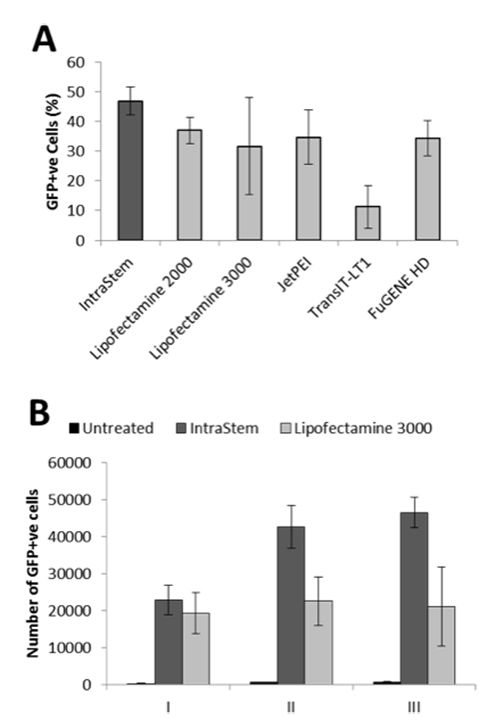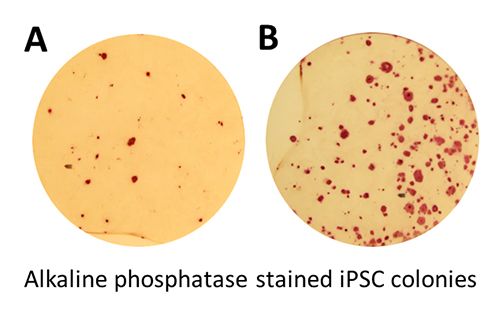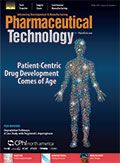Advanced Cell Penetrating Peptide Systems for Gene Therapy
Intracellular strategies offer an effective alternative approach to deliver a range of therapeutic proteins.
GIROSCIENCE - STOCK.ADOBE.COM

Efficient delivery of therapeutics is at the core of successful drug therapy. While the delivery of small molecules and systemically acting biologics is now a practiced art, the delivery of biologics into cells (such as the intracellular delivery of a gene therapy) and the application of cells themselves as the therapeutic is an area requiring further optimization.
In the case of cell therapy, such as stem cell-based regenerative medicine approaches, it is known that ~95% of cells either die on administration or migrate away from the site of application, inhibiting efficacy and introducing safety risks. New technologies are therefore required to retain cells at the disease site and for them to remain viable and functional for local tissue repair or regeneration. One such innovation is Locate Bio’s TAOS platform which is an injectable matrix specifically designed for the administration and localization of advanced therapies, such as stem cells (1–3).
For the intracellular delivery of biologics, the challenge is to get a relatively large payload across the cell membrane to the cytoplasm or organelle of action. Gene therapies, even using plasmid DNA (pDNA) of small size 3 kbp, represent ~2000 kDa molecules, which do not readily cross the cell membrane unlike small molecules. While cellular uptake mechanisms exist, they can trap such therapeutics in intracelÂlular vesicles (endosomes), sequestering them away from the site of action (for pDNA transfection this being the nucleus), and rendering them inactive.
Gene therapy
Gene therapy approaches can be divided into ex-vivo cell modification and direct in-vivoapplications. The former includes the introduction of new functional genes into autologous (patient-derived) cells, which are then given back as therapy, such as CAR-T engineered T-cells (with cancer targeting receptors) or hematopoietic stem cells with replacement or corrected genes to augment patient immunology. The present approaches are largely focused on physical methods such as electroporation (the use of electrical potential to make cell membranes transiently permeable), which are detrimental to viability, or the use of engineered viruses, such as lentivirus, which have evolved to penetrate cells and hijack host cellular machinery to integrate and express genes ectopically. Both routes have been extensively used to deliver genetic cargos such as plasmid DNA, transposon systems or ribonucleoprotein expression such as CRISPR/Cas9 to enable stably retained gene editing. Non-viral systems, including lipid nanoparticles (LNPs), synthetic vectors, and cell penetrating peptides (CPPs), have long promised to overÂcome the limitations of viral delivery methods and physical methods (such as electroporation), as safe, cost-effective, and versatile alternatives (4). In the case of ex-vivo applications, where permanent effects are required, integrating viruses such as lentivirus and retroviruses are commonly used.
In-vivo gene therapy presents different challenges, as it is much more difficult to apply physical methods such as electroporation to tissues, although ‘gene gun’ approaches (using pulses of pressurized gas) are available for local intramuscular delivery. The mainstay of in-vivo gene therapy approaches is the use of viruses, predominantly AAV or lentivirus, which can transduce many cell types within the body. However, these systems have limited tissue specificity or targeting, require high doses of virus to achieve therapeutic levels of target tissue gene expression, and also present key challenges in terms of safety (the risk of mutagenic integration into the genome and viruses regaining the ability to replicate), tolerability, and cost of goods. Viral delivery systems can only be utilized as gene therapy vectors and are not compatible with the delivery of other biological molecules such as peptides, ribonucleoprotein, or RNA drugs.
Non-viral systems have long promised to overcome the limitations of viral delivery methods and physical methods (such as electroporation), as safe, cost-effective, and versatile alternatives (4). However, to date, they have suffered with their own limitations-principally lower efficacy and higher cell toxicity. Next-generation approaches in development are making large in roads into overcoming these barriers to widespread use as intracellular delivery systems.
Advanced cell penetrating peptides
Cell penetrating peptides (CPPs) have emerged as potential therapeutic agents due to their intrinsic ability to enter cells and mediate uptake of a wide range of cargos by endocytosis (5–7). Historically, however, the use of CPPs has been hampered by inefficient delivery to the intended cellular compartment (e.g., nucleus or cytoplasm). Typically, micromolar concentrations may be required to obtain high levels of transfection, and even where these levels can be achieved (e.g., ex-vivo) it can be toxic to the target cell, resulting in relatively low transfection efficiency overall.
To overcome this inefficiency, an approach using a novel peptide-based intracellular delivery system (IntraStem, Locate Bio) uses the method of glycosaminoglycan (GAG) enhanced transduction (8). This family of non-viral vectors utilizes a peptide that fuses a heparan sulfate GAGs binding domain with a classical CPP to achieve a highly synergistic increase in transfection rates. This can be used as a delivery system to deliver a range of biologic molecules into cells, through a simple complexation process involving electroÂstatic condensation of the peptide and payload to create nanoparticles, which are readily taken up by target cells. For example, high molecular weight nucleic acids (such as pDNAs) are rapidly condensed to form compact stable nanoparticles (80–100 nm), which provides protection to the payload as well as facilitating diffusion through biofilms and biological barriers to reach target tissues in-vivo. Importantly, this approach has been shown to deliver a wide range of cargos in-vitro including recombinant fluorescent proteins, transcription factors, antibodies, drug-loaded nanoparticles, and enzymes, with uptake levels up to two orders of magnitude higher than previously reported in cell types considered hard to transduce (8).
Somewhat surprisingly the IntraStem system does not exhibit the expected toxicity profile of classical CPPs-due to less reliance of cationic charge (8)-and it has been shown to preserve cell viability and stem cell potency. In a study comparing various transfection reagents (considered to be in-vitro industry gold standards) and the peptide-based intracellular technology, the latter was found to exhibit low toxicity and maintain post-transfection cell proliferation rates, allowing repeated or sustained administration of the biologic to cells (Figure 1). Through repeated and sustained administration of the IntraStem delivered therapeutic to target cells, it is possible to achieve a high level of payload expression while preserving their viability and potency. This makes the approach particularly attractive for applications where target cells numbers are particularly low, restricted, and/or sensitive to other transfection methods.
Figure 1: Efficient transfection of a green fluorescent protein (GFP) reporter gene via IntraStem peptide. (a) Transfection of 1 µg plasmid DNA was compared to 'gold standard' in-vitro transfection reagents in terms of transfection efficiency and assessed by flow cytometry. (b) The number of GFP positive cells with three serial transfections of IntraStem or Lipofectamine 3000 shows serial IntraStem delivery can outcompete Lipofectamine3000 (life technologies) in terms of total transfected cell numbers while preserving cell viability. [ALL FIGURES COURTESY OF AUTHORS]

Therapeutic applications
The IntraStem system has also been used successfully by various academic groups. These include the generation of induced pluripotent stem cells (iPSCs) using episomal vectors (Figure 2), and in the delivery of gene editing technologies (e.g., CRISPR/Cas9 to iPSCs) ex-vivo to correct genes or generate disease models (9).
Figure 2: Efficient reprogramming of fibroblasts to induced pluripotent stem cells (iPSC) using IntraStem to transfect (a) Yamanaka factor episomes and (b) a modified cocktail of factors. Colonies were stained for Alkaline phosphatase activity after culturing in defined E8 media.

To assess the IntraStem technology in-vivo, various tailored formulations have been tested in a number of pre-clinical models, including lung and brain models, with promising results (10). Moreover, there was no evidence of acute toxicity following administration, indicating the non-immunogenic potential of IntraStem particles (10). Furthermore, direct modification of the peptide, the addition of accessory peptides, and/or additives to the transfection complex can further optimize tissue penetration, transfection efficiency, and/or the longevity of expression of the nucleic acid, giving a tunable and versatile intracellular delivery system.
Conclusion
As an attractive alternative to physical or viral methods of transfection, next-generation peptide-based intracellular delivery systems provide an efficient means of delivering a range of therapeutic biomolecules into a wide array of cell types. Locate Bio is currently developing its IntraStem technology for both ex-vivo and in-vivo therapeutic applications following encouraging data generated by a range of academic groups. The evidence to date supports the potential therapeutic application of IntraStem as a delivery system in the treatment of a variety of diseases. These could include gene augmentation or gene editing approaches for cell therapies or direct gene therapy in the body, either through local or systemic delivery (9–11), or non-DNA based treatment approaches.
References
1. H.M. Eltaher, et al., Acta Biomater. 41 181–192 (2016).
2. H.A-D.M. Abu-Awwad, L. Thiagarajan, and J.E. Dixon, Acta Biomater. 57 225–237 (2017).
3. L. Thiagarajan, H.A-D.M. Abu-Awwad, and J.E. Dixon, Stem Cells Transl. Med. 6 (12) 2146–2159 (2017).
4. J.E. Dixon, et al., Proc. Natl Acad. Sci. USA 113 E291–E299 (2016).
5. A. Joliot and A. Prochiantz, Nat. Cell. Biol. 6 189–196 (2004).
6. A.D. Frankel and C.O. Pabo, Cell 55 1189–1193 (1988).
7. M. Green and P.M. Loewenstein, Cell 55 1179–1188 (1988)
8. V. Torchilin, Drug Discovery Today: Technologies, 5 e95–e103 (2008).
9. Dixon et al. Manuscript in preparation.
10. G. Osman, et al., J. Control. Release 285 35–45 (2018).
11. Raftery et al. Manuscript in preparation.
Article Details
Pharmaceutical Technology
Vol. 43, No. 4
April 2019
Pages: 26–28
Citation
When referring to this article, please cite it as L. Johnson, J.E. Dixon, and K. Shakesheff, “Advancing Cell Penetrating Peptide Systems for Gene Therapy,” Pharmaceutical Technology 43 (4) 2019.
About the Authors
Lyndsey Johnson, PhD, is a project scientist and program manager for IntraStem at Locate Bio Limited; James E. Dixon, PhD, is an assistant professor at the University of Nottingham; and Kevin M. Shakesheff,* PhD, is a professor at the University of Nottingham and also chief scientific officer at Locate Bio, kshakesheff@locatebio.com.
*To whom all correspondence should be addressed

Drug Solutions Podcast: Applying Appropriate Analytics to Drug Development
March 26th 2024In this episode of the Drug Solutions Podcast, Jan Bekker, Vice President of Business Development, Commercial and Technical Operations at BioCina, discusses the latest analytical tools and their applications in the drug development market.



















